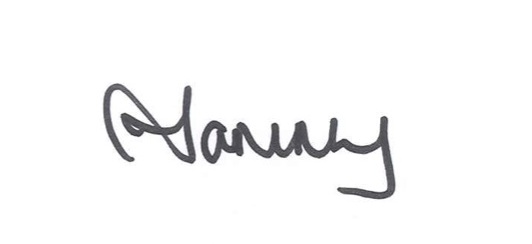Why is managing constant change so important?
It’s no longer a matter of thinking “if we can just get through this period of x”, it will all be ok, and we will go back to life as usual. Change is the new usual. And it’s not going to go away.
The concept of “managing” change brings to mind a visual like an animal trainer trying to tame a feisty lion or tiger. But as HR professionals, we need to do more than just “manage” it- we need to use it as an enabler for our organisations to grow and thrive. Rather than thinking of it as something which we need to control, we need to embrace it, and use this ability to embrace change as a competitive advantage.
As HR professionals, we have access to more information than ever on what makes for a successful change. It’s critical that we do change our way of thinking around success, as change initiatives are still not delivering. 2018 research from McKinsey backs up what we have known for years, that transformations are still not delivering on their value. McKinsey’s research cites a 74% failure rate; which is pretty damning. It still stuns me that we know this about change effectiveness (and have for a good few decades), and yet we think that our organisation will be the exception to the rule. It may well be, but only with change built in as a fundamental part of an organisation’s DNA – not as a bolt on at the end of a project.
We spend an inordinate amount of time and money trying to introduce changes that employees foil by using workabouts. Think about the number of times a new ERP or other system has been hailed as “successfully implemented” only to find that there are still employees using excel spreadsheets rather than the new system.
Project Management vs Change Management
A nice way to think about this is: project management gets stuff done, change management gets things adopted. A shiny new system is useless if people don’t use it.
As an example of this- the Sydney Cross City Tunnel was an astounding success from a project management perspective- it was ahead of time and unbelievably, under budget. And yet, it is widely considered to be a failure – because the public even years later, didn’t use it. People went out of their way, taking routes that took longer or cost more – because of the perception of the way that the change was managed and how it was foisted upon them.
What makes change difficult?
Think about what change is: a group or groups of individuals electing to do something different on a regular basis in a way that benefits the business. Now think about how hard it can be to change as an individual (losing weight, giving up the ciggies or the booze, gaining weight, going to the gym etc etc). Individual change is hard – but usually we have a real sense of the “why” that keeps us going when the going gets tough. Organisational change is very hard as it involves lots of people, often without a compelling personal why. We just expect people to “get it” or want to do it because it’s good for the business. When you think of change in terms of many individual’s change processes, overlaid with introduction of new technology/equipment you get some sense of why organisational change is hard to implement and sustain.
Back to the project management v change management issue. Often it is people within the business, well removed from HR, who are doing the planning and project management; HR are then allocated a few communication related tasks at the end of said project. This can cause a real disconnect between how the project is sold to the business, and the reality of implementing the change.
HR professionals can struggle because what makes for a successful change is not always within their immediate control. HR needs to influence senior leadership and others within the business – which is not always easy to do.
Change can be difficult – because it taps into competing priorities. The business on the one hand, that wants it done as quickly as possible. And the people, who as humans, need to time to adjust. As change is often imposed too quickly, the people are lost in the process. And the reality is still that it is the people that we need to make the change successful.
What makes for a successful change?
We know what makes for a successful change; and whilst none of it is rocket science, it’s not always included as part of the change and project plan:
- Senior management communicating openly;
- Leaders role modelling behaviour changes;
- Managers prioritising leading and developing their teams; and
- Leaders held accountable for the change
Those that disagree
It can be tempting to disregard those who don’t agree with our perspective. Resistors are often branded as trouble makers and disregarded. But resistors can be an important source of data around where the change is at. They should be listened to. That doesn’t mean that HR needs to agree with their perspective but understanding it will always create a more accurate picture of what is going on.
Experiencing change
I love this little story from William Bridges:
“ The front runners take off like rabbits, then the second rank (who are nowhere near as fast) get underway. By the time the leaders are well out on the course, the Sunday runners in the rear, who were too far back to even hear the starting gun (and who only hope to be able to finish the race) are beginning to stir.
A rumour comes back through the crowd: the race has started. The Sunday runners move their feet a little to loosen up, but they can’t get moving yet. They shuffle a little, then begin taking smaller steps.
About the time the Sunday runners have sped up to a slow jog, some of the front runners are nearing the finish line and thinking, “Well, this is about over. Good race. What’ll I do next week?”
So it is with the company executives. They went through their transitions long ago when they started grappling with the problems. They forget that their followers are still struggling.”
Often those that plan the change forget that those that are affected by the change haven’t had the months of talking and intricate planning to get used to the idea. Then they wonder why there isn’t the same degree of enthusiasm for the idea.
Key Takeaways
- We need to change (ha) the way we think about change.. It’s not about managing it – but rather using it for our benefit.
- HR needs to get in on projects at the front end.
- Project management is not change management.
Want More?
As always, if you’d like to get in touch – you can click here.
If you’d like to read any of the 250+ blog posts on this site, you can click here. Here are a selection specifically on change.
If you’d like to buy one of my books, you can click here.
And if you’d like to sign up to permission to dream programme, you can click here.
See you next week.

Versions of this article first appeared in HRD, here and here.


